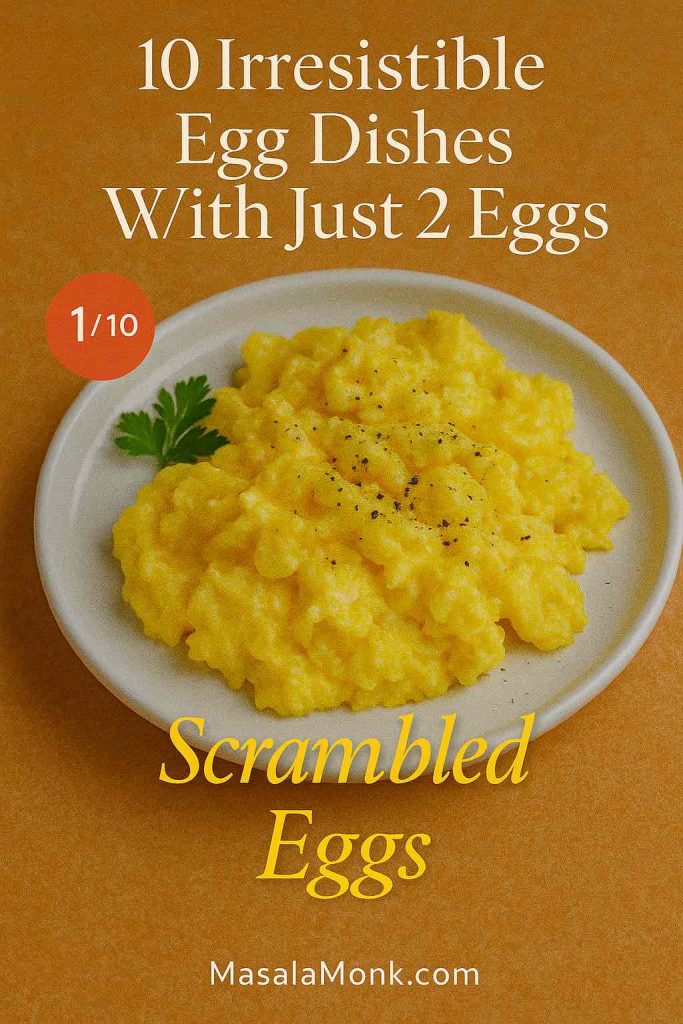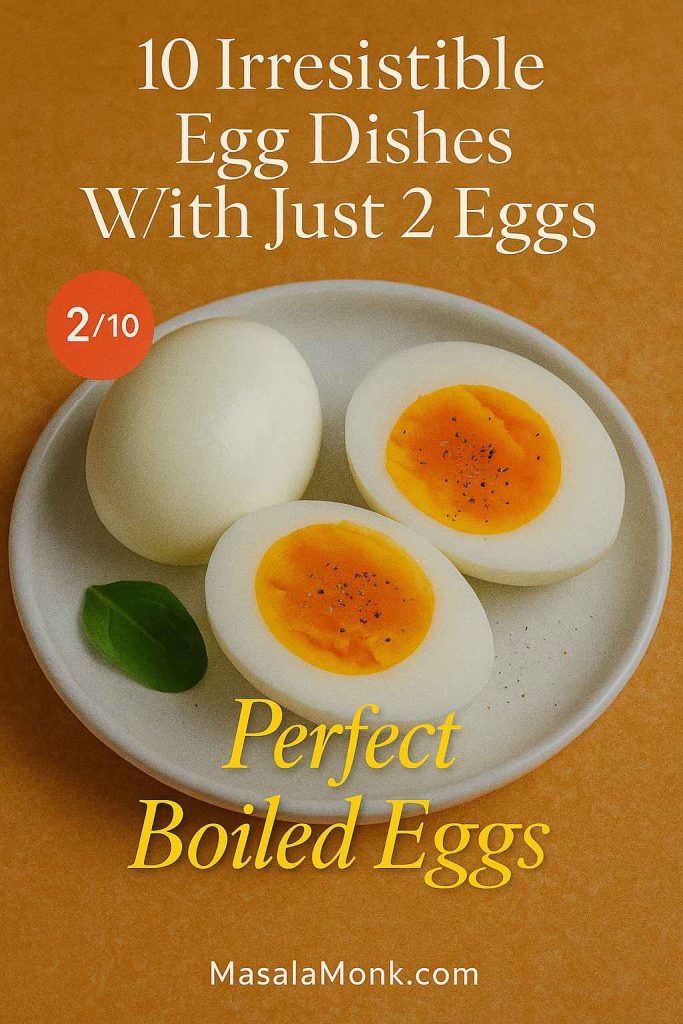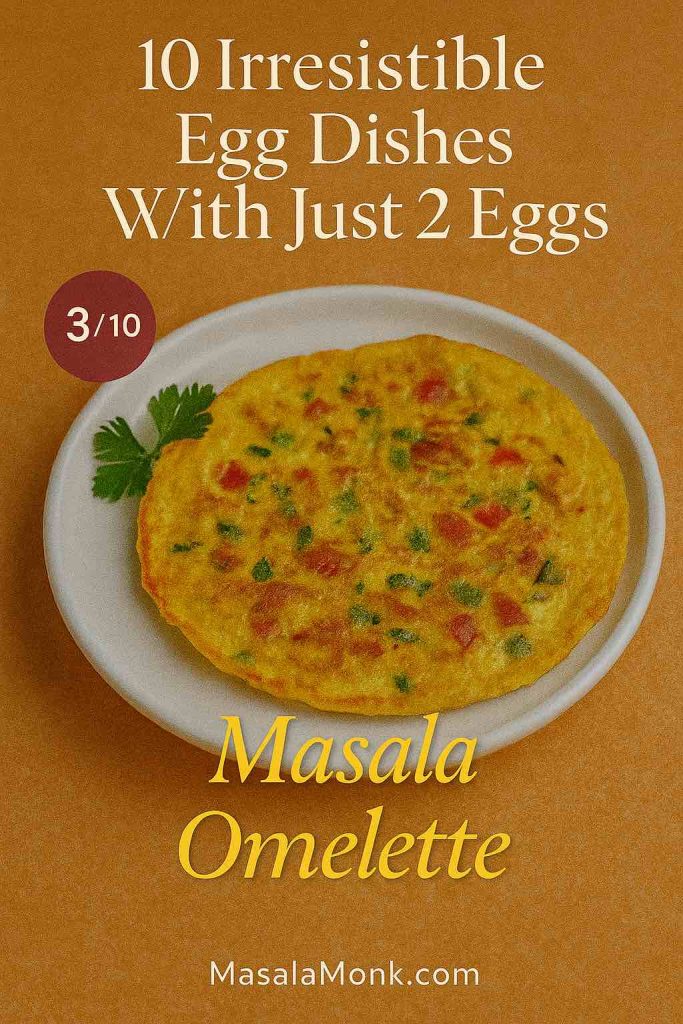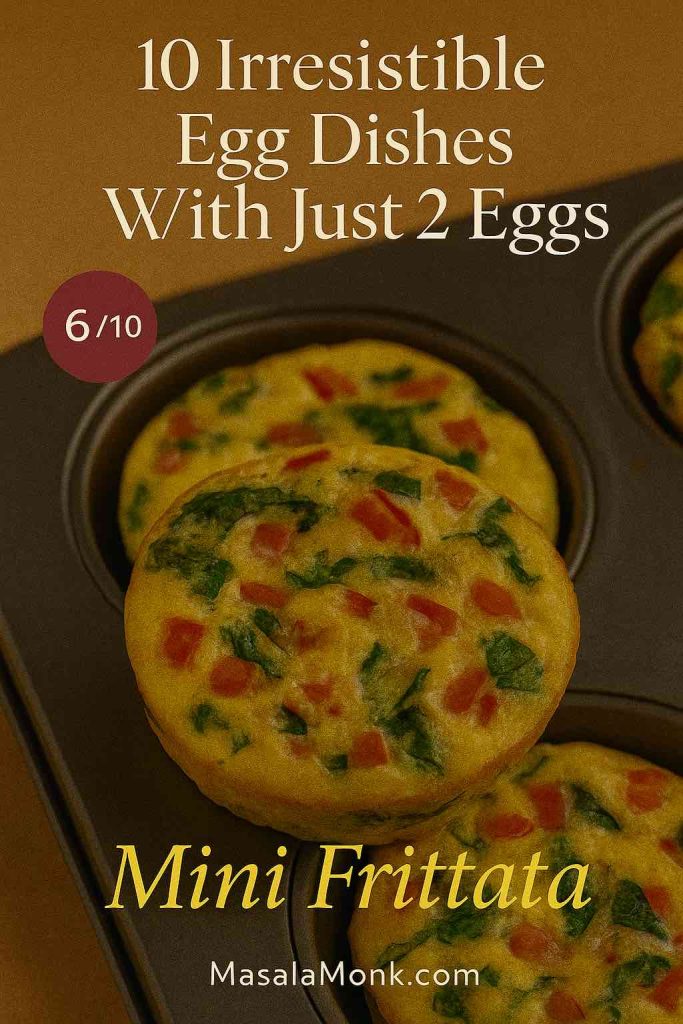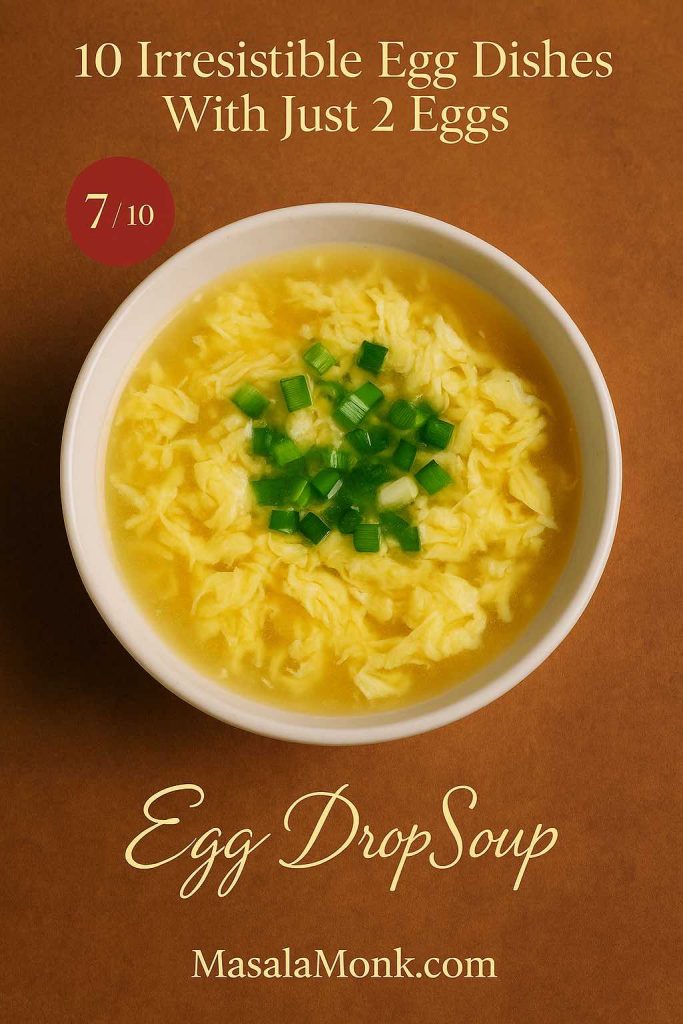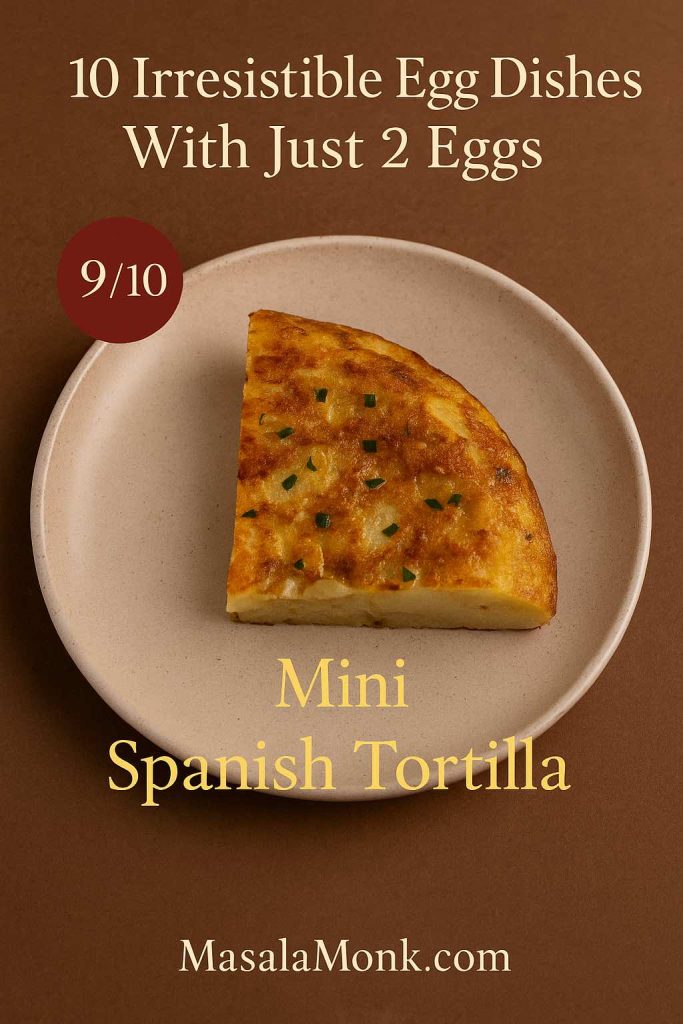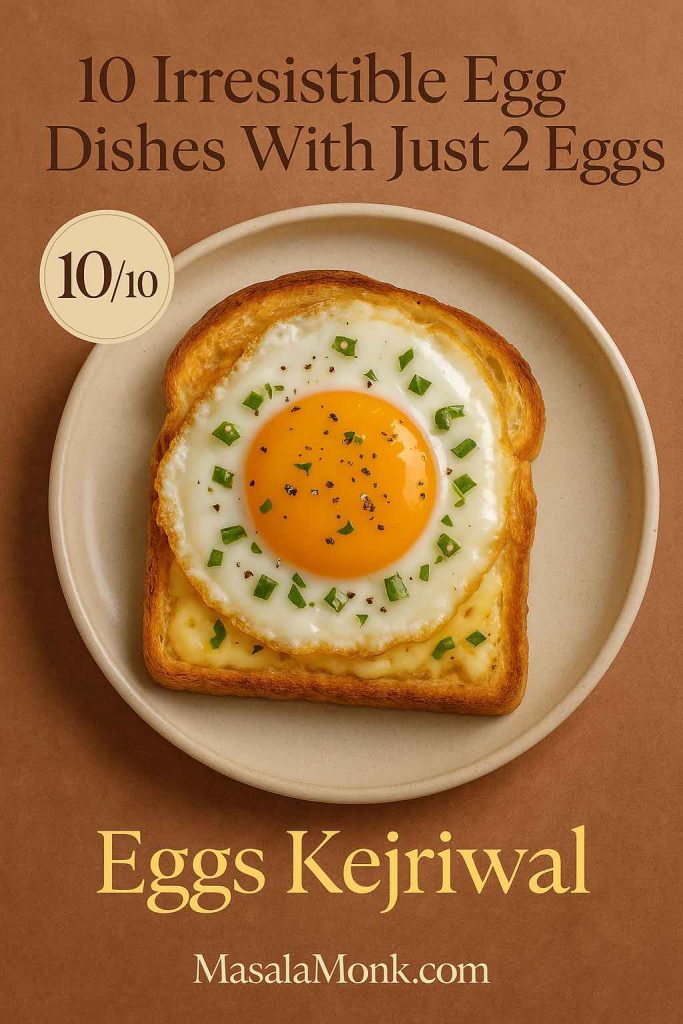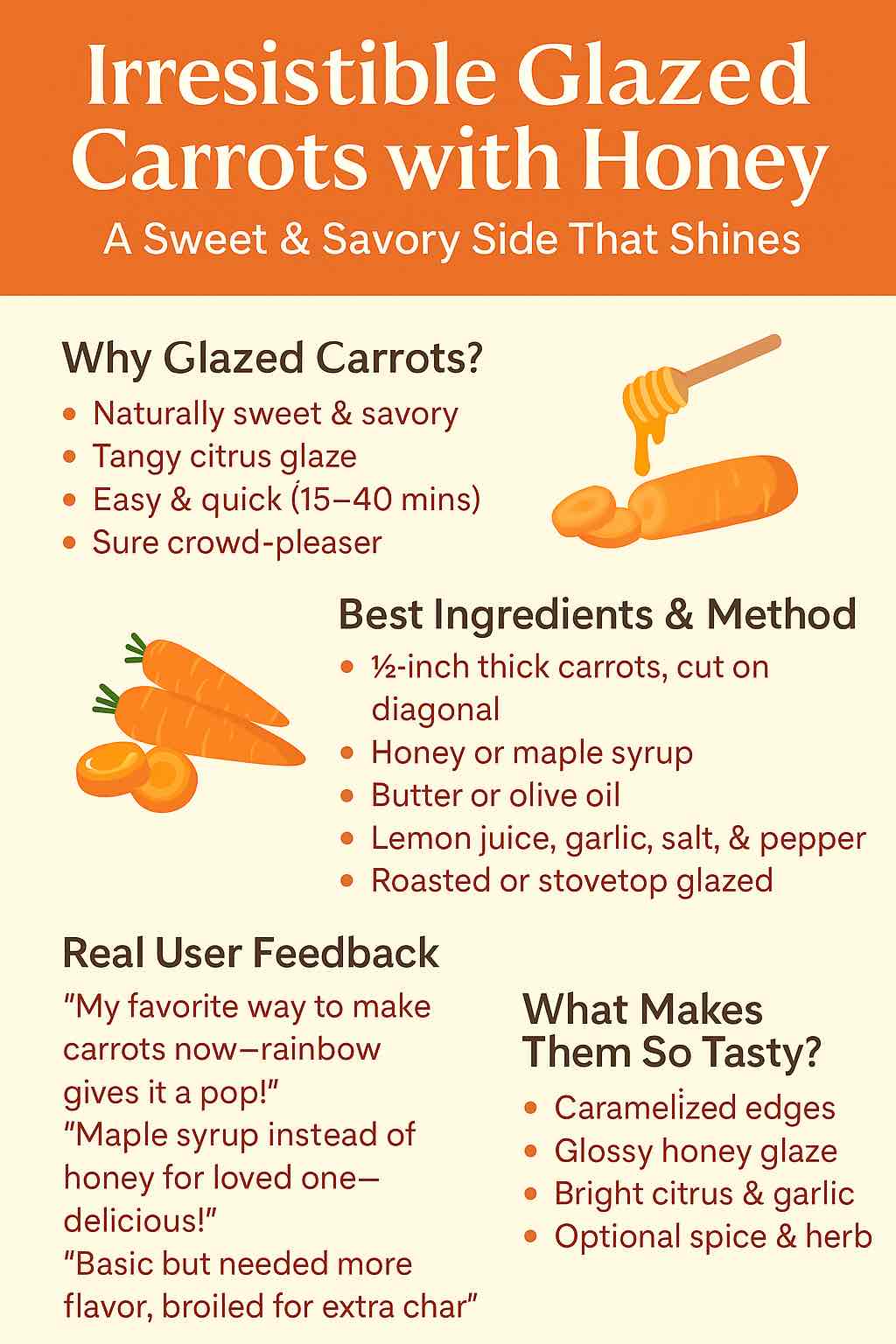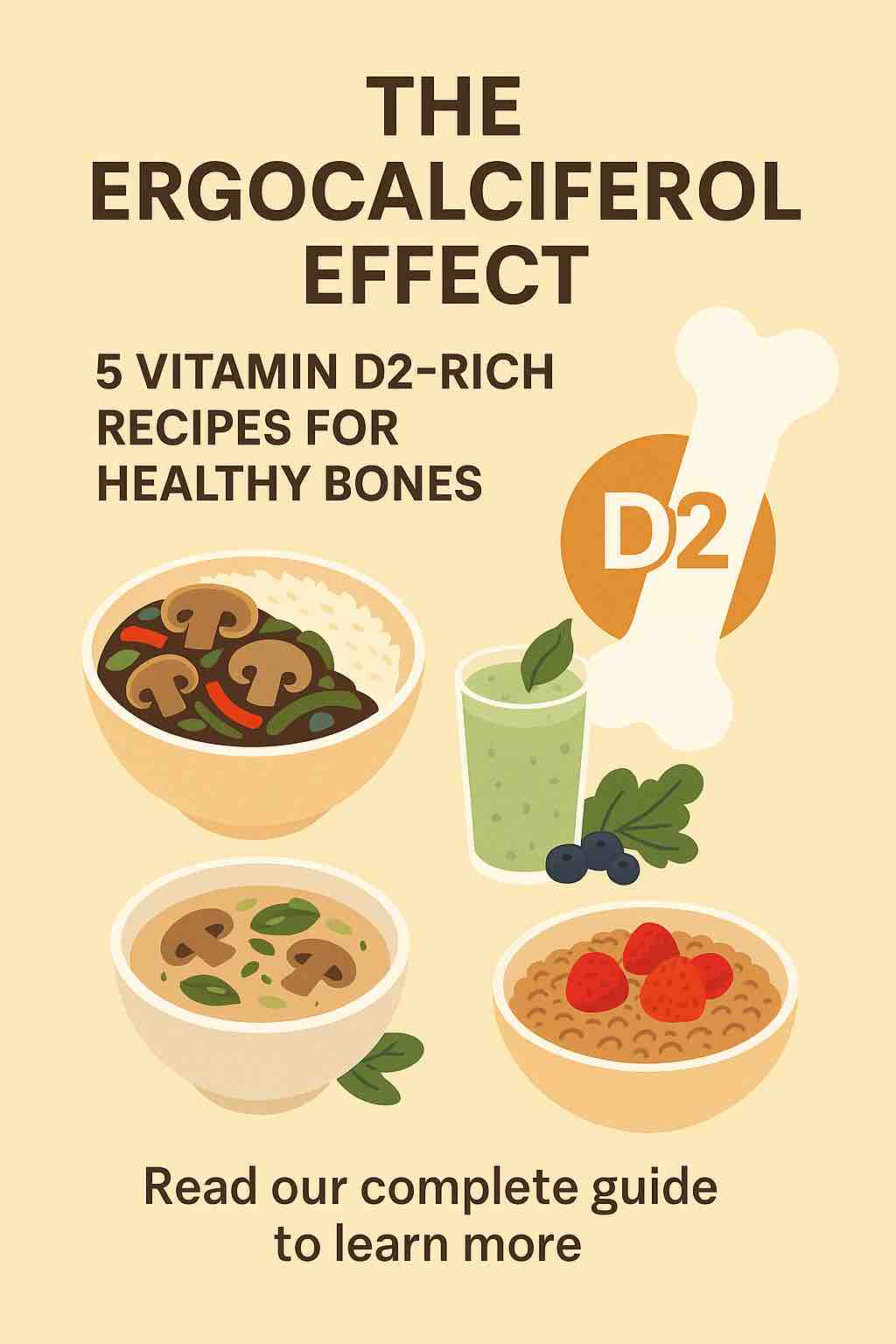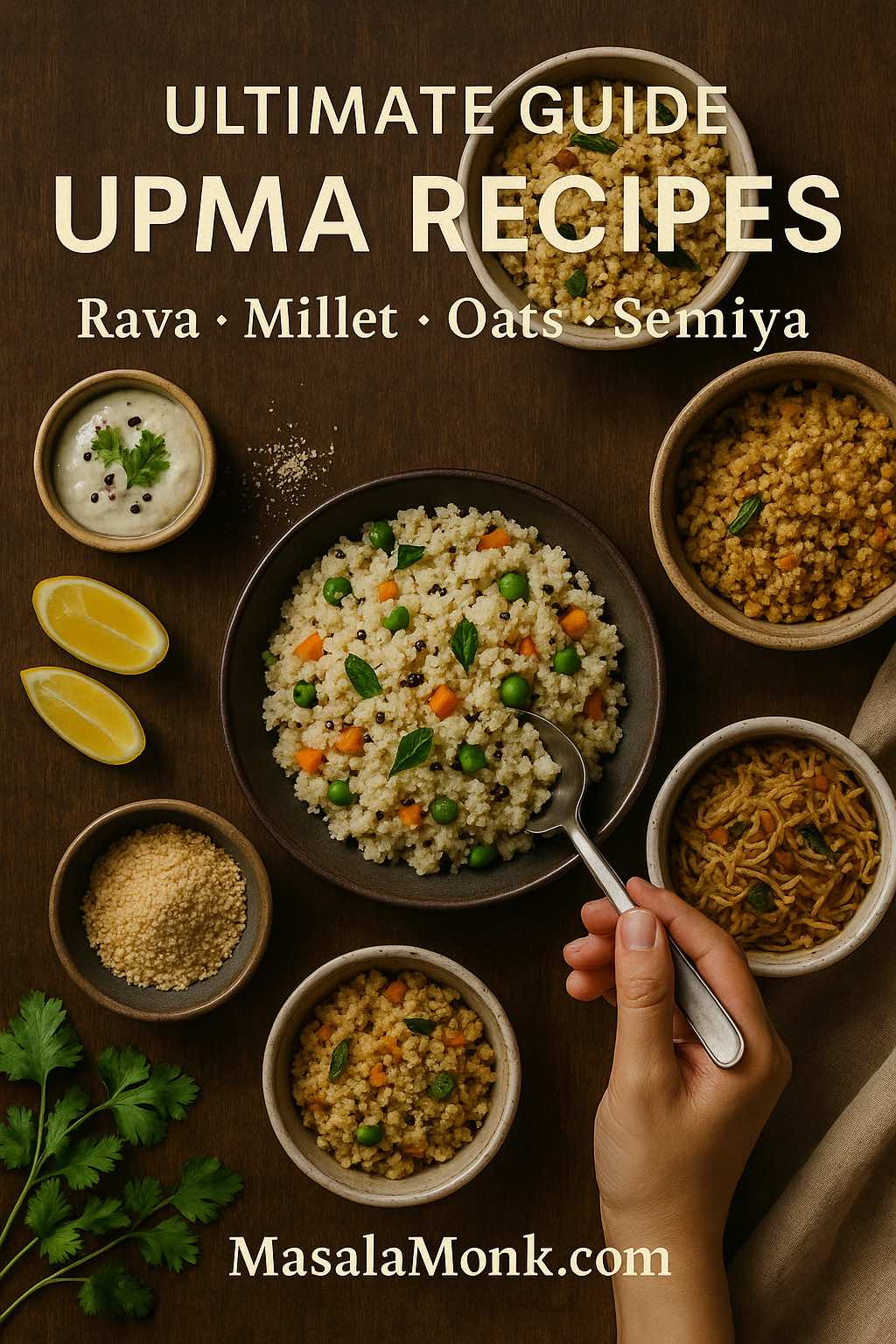
Upma is one of those breakfasts that feels like home, no matter which part of India you’re from. It’s warm, soft, gently spiced, and endlessly adaptable. With a few pantry staples and one basic upma recipe in your head, you can improvise everything from a simple rava upma for rushed mornings to a millet upma for days when you want something a little more wholesome, or even an oats or quinoa upma when you’re leaning towards high-fibre bowls.
For people looking for “upma recipe”, “how to make upma”, “simple upma recipe”, “millet upma recipe”, “semiya upma”, “instant upma premix” or even “upit recipe”, this long, no-rush guide is meant to sit in your kitchen as a one-stop reference. You’ll get:
- A detailed, step-by-step rava upma recipe with all the tiny tricks that matter
- Vegetable and masala variations that turn it into a one-bowl meal
- Millet upma with different grain options and real health context
- Semiya (vermicelli) upma, for tiffin boxes and kids who love noodles
- Oats upma and quinoa upma, with links to what science actually says about them
- Wheat and rice rava upma for days when you don’t feel like semolina
- A homemade instant upma mix for travel or office lunches
- Plenty of ideas for what to serve with upma to build a complete breakfast plate
Along the way, you’ll also find links out to trusted recipe writers and nutrition resources, so you’re not just taking one blog’s word for it. For instance, if you like cross-checking your basics, you can always compare with this lovely, traditional South Indian rava upma method on Indian Healthy Recipes, which you’ll find under the title traditional South Indian rava upma recipe.
What Is Upma, Really?
At its heart, upma is a savoury porridge or pilaf made by roasting a grain (most commonly semolina / suji) and then simmering it in a seasoned, tempered liquid. The tempering usually includes mustard seeds, lentils like urad dal and chana dal, curry leaves, green chillies, onion and sometimes ginger. Once the grain absorbs the water and steams, it turns soft and fluffy, ready to be fluffed, finished with lemon and coriander, and eaten hot.

Traditionally, rava upma is especially popular in South India, often served with coconut chutney and filter coffee. If you’re curious about that version, you can see another take on it at Veg Recipes of India under their traditional upma with coconut chutney, which matches closely with what many homes actually make.
However, the family of upma is much bigger than just semolina. As grains like ragi, foxtail millet, jowar, oats and quinoa become more common in pantries, the same technique is being reused with different bases. That means an “upma recipe” today can be:
- A classic suji upma with just onions and chillies
- A colourful vegetable upma
- A masala upma with sambar powder or garam masala
- A millet upma packed with fibre and minerals
- A semiya upma that looks like a noodle stir-fry
- An oats upma that quietly helps your cholesterol numbers
- A quinoa upma that feels modern but very Indian in flavour
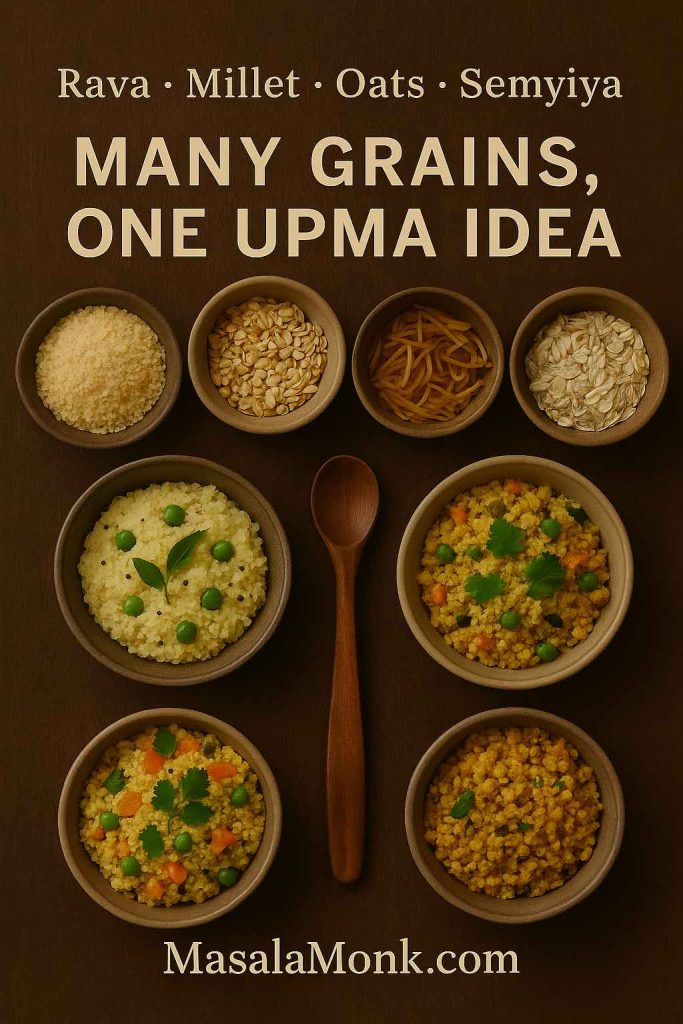
Instead of treating each of these as a totally separate dish, it helps to understand the common logic once, then play.
Also Read: Double Chocolate Chip Cookies – Easy Recipe with 7 Variations
The Classic Rava Upma Recipe (Suji Upma)
Let’s begin with the version you’re most likely to cook again and again: a simple rava upma. Once you get comfortable with this, switching to millet rava or wheat rava upma becomes almost automatic.
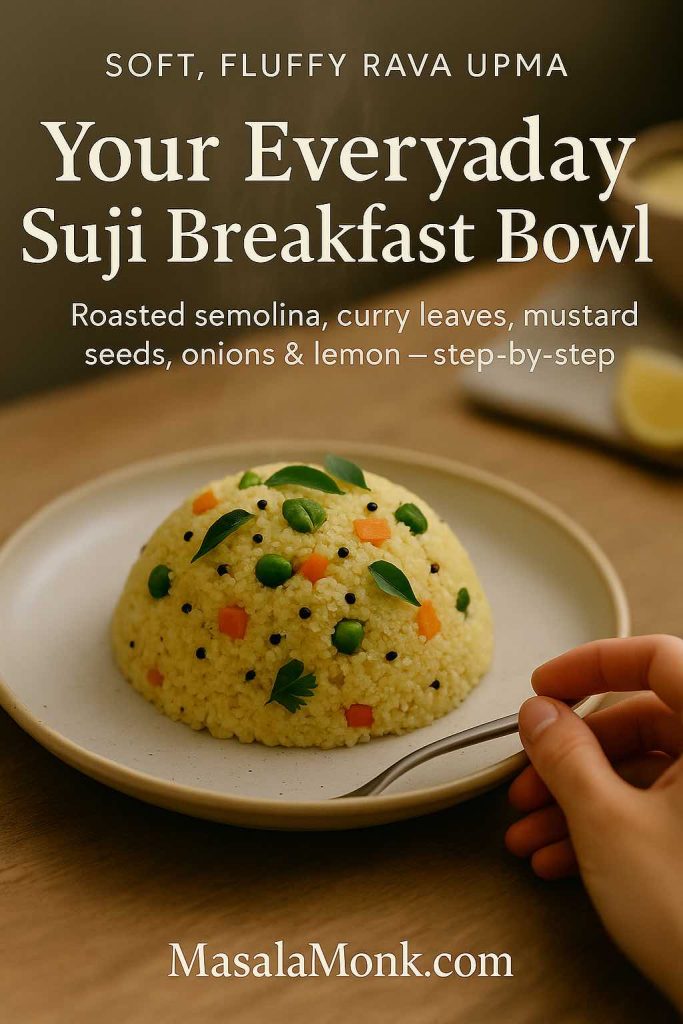
Ingredients for 2 Servings
- Semolina / suji / upma rava – ½ cup (medium or slightly coarse)
- Water – 1½ cups (you can move between 1¼ and 1¾ depending on how soft you like it)
- Oil or ghee – 2 tablespoons
- Mustard seeds – ½ teaspoon
- Urad dal – 1 teaspoon
- Chana dal – 1 teaspoon
- Cashew halves – 6–8 (optional but lovely)
- Onion – 1 small, finely chopped
- Green chillies – 1–2, slit or chopped
- Ginger – ½ inch piece, finely chopped
- Fresh curry leaves – 8–10
- Salt – to taste
- Lemon juice – 1–2 teaspoons
- Fresh coriander – a small handful, chopped
Home cooks and bloggers disagree very gently about the perfect ratio of rava to water. Some prefer it soft and spoonable, others a little drier and crumbly. If you want to dig deeper into this, Raks Kitchen has a useful breakdown of textures and ratios in her rava upma water ratio tips. For now, though, 1:3 is a safe, beginner-friendly place to start.
Step 1: Roast the Rava
Begin by dry-roasting the semolina in a wide pan. Keep the flame low-medium and stir continuously so it doesn’t catch at the bottom.

You’re looking for:
- A slightly deeper colour, but not brown
- A warm, nutty aroma
- Grains that feel separate when you stir them
This step might feel skippable if you’ve bought “roasted upma rava”, but it’s worth doing anyway. Roasting removes raw flavours and, more importantly, helps the rava swell up evenly without turning sticky.
Once roasted, transfer the rava to a plate and let it cool slightly while you prepare the tempering.
Step 2: Build the Tempering
In the same pan, add the oil or ghee. When it heats up, drop in mustard seeds. As soon as they splutter, stir in urad dal and chana dal.
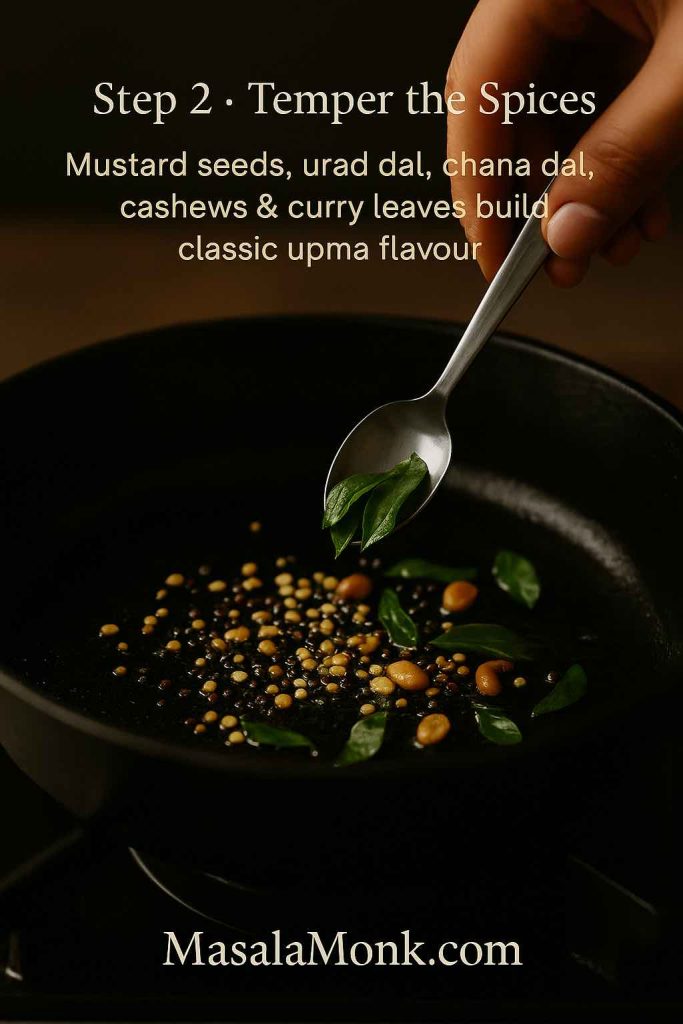
- Fry the dals on medium heat until they turn golden and crisp.
- Add cashews at this stage if you’re using them and fry till lightly golden.
The sizzling mix of mustard, dals and nuts is not just for taste; it contributes crunch in every bite. After this, tip in the curry leaves, chopped ginger and green chillies. They’ll sputter a bit, so stand back for a moment.
Finally, add the chopped onion. Sauté until it turns soft and translucent. You don’t really need to brown the onion for a basic upma recipe; you just want the raw bite to vanish.
Step 3: Bring the Spiced Water to a Boil
Now pour in the measured water and add salt. Taste the water – it should be slightly saltier than you’d like the final upma to be, because the rava will absorb some of that salt.
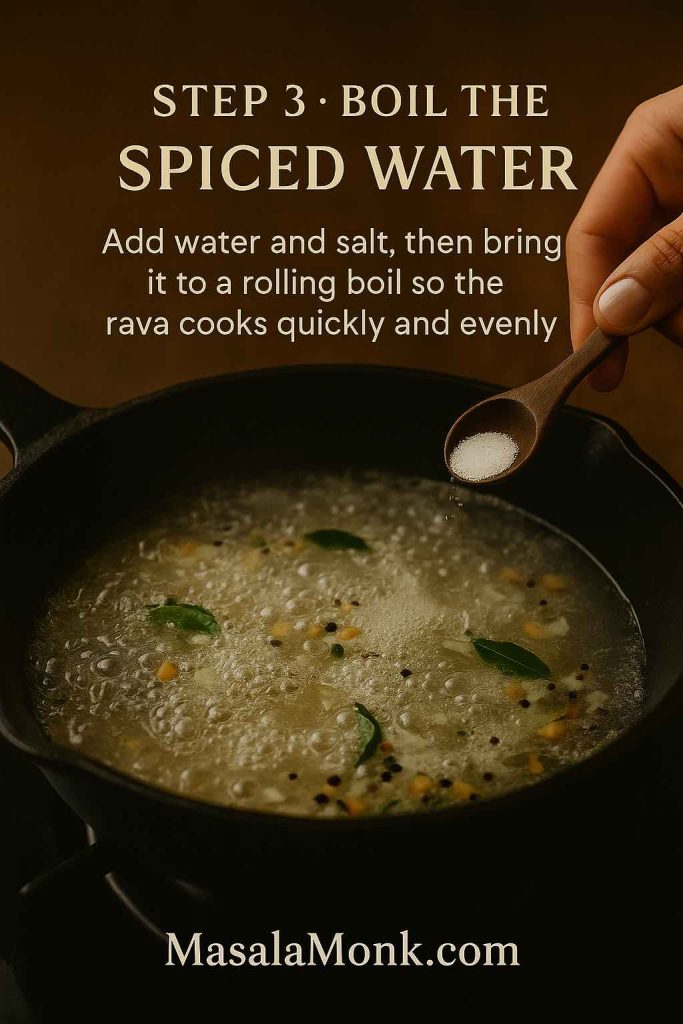
Bring this to a rolling boil. This matters more than it seems:
- Boiling water helps rava swell quickly and evenly.
- It dramatically reduces your chances of ending up with lumpy upma.
Meanwhile, if you feel like cross-checking a slightly different style of tempering or vegetable add-ins, you could glance through the traditional South Indian rava upma recipe at Indian Healthy Recipes; you’ll notice the same broad steps.
Step 4: Add the Rava Without Lumps
Once the water is bubbling, lower the flame. Hold the roasted rava in one hand and a spatula in the other.

- Slowly sprinkle the rava into the boiling water in a steady stream.
- Keep stirring continuously.
The idea is to give each little sprinkle of rava a chance to meet the hot liquid and swell individually. If you dump it all in at once, it will clump and form dumplings.
Within a minute or two, the mixture will start thickening and pulling away from the sides.
Step 5: Steam, Fluff and Finish
At this point, cover the pan and let the upma steam on the lowest flame for about 3–4 minutes. Switch off the heat and allow it to sit, still covered, for another 2 minutes.

When you open the lid:
- The rava should be cooked through, soft and fluffy.
- The surface might look a little dome-like; that’s fine.
Fluff gently with a fork or spatula to loosen up the grains. Finally, add lemon juice and chopped coriander, and fold everything together. Taste and adjust salt or lemon once more.
Serve hot with coconut chutney, podi, pickle or simply a drizzle of ghee on top. For another angle on serving ideas (especially with coconut chutney), you can refer to the version at Veg Recipes of India under their traditional upma with coconut chutney.
Also Read: Carbonara Recipe: Italian Pasta (Creamy, Veggie, Chicken, Shrimp, Tuna & Keto)
Vegetable Upma, Masala Upma Recipe and Other Rava Upma Variations
Once the basic method feels natural, you’ll inevitably start tweaking it. Some mornings you’ll want more vegetables, some days more heat, and sometimes you’ll be in the mood for a slightly indulgent, ghee-laced bowl of “mom upma”.
Vegetable Upma
For a simple vegetable upma, follow the classic recipe with one change: after sautéing the onion, add about ½ to 1 cup of finely chopped vegetables such as:
- Carrots
- Green beans
- Green peas
- Sweet corn
- Capsicum
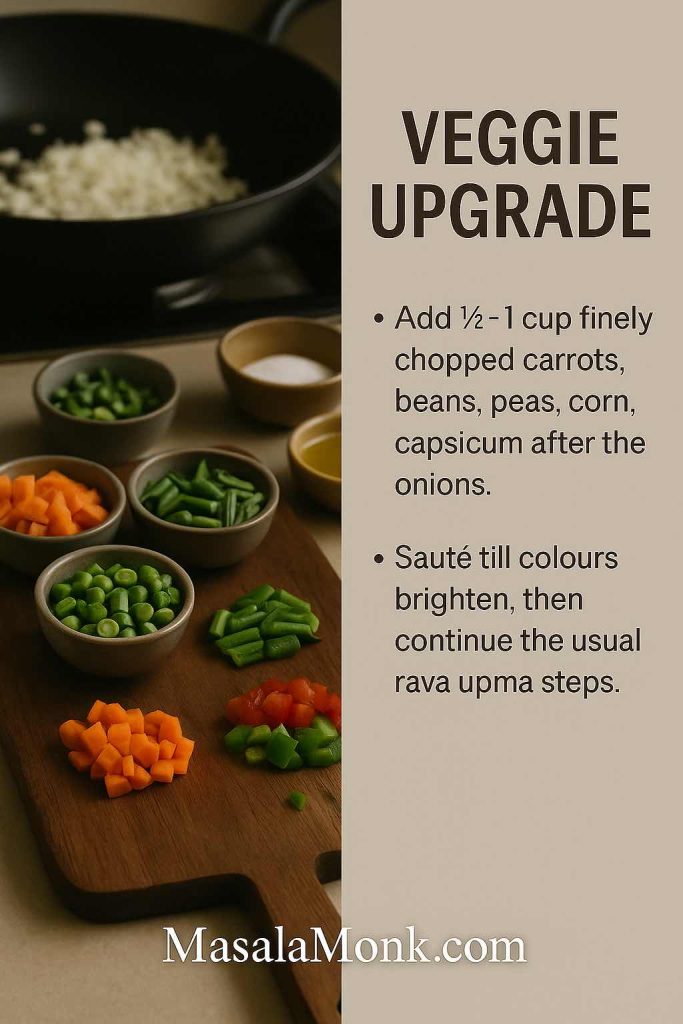
Sauté the vegetables for a couple of minutes until the colours brighten and they lose their rawness. After that, proceed with water, salt and rava as usual.
This variation cleverly answers many searches like “simple upma recipe”, “veggie upma” or “upma recipe for kids”, without changing the core technique.
Masala Upma
For mornings when you want something closer to a one-bowl lunch, a masala upma works beautifully.

In addition to the vegetables:
- Add ¼ teaspoon turmeric powder for a bright colour.
- Sprinkle in ½ teaspoon sambar powder or a mild garam masala.
Those additions transform the flavour just enough to make it feel more lunch-worthy, especially if you serve it with a dollop of yoghurt and a salad on the side.
Red Rava Upma Recipe
Sometimes you’ll come across red rava (made from whole wheat or red rice) labelled as “upma rava” too. You can treat it in almost the same way as suji, with slight adjustments:
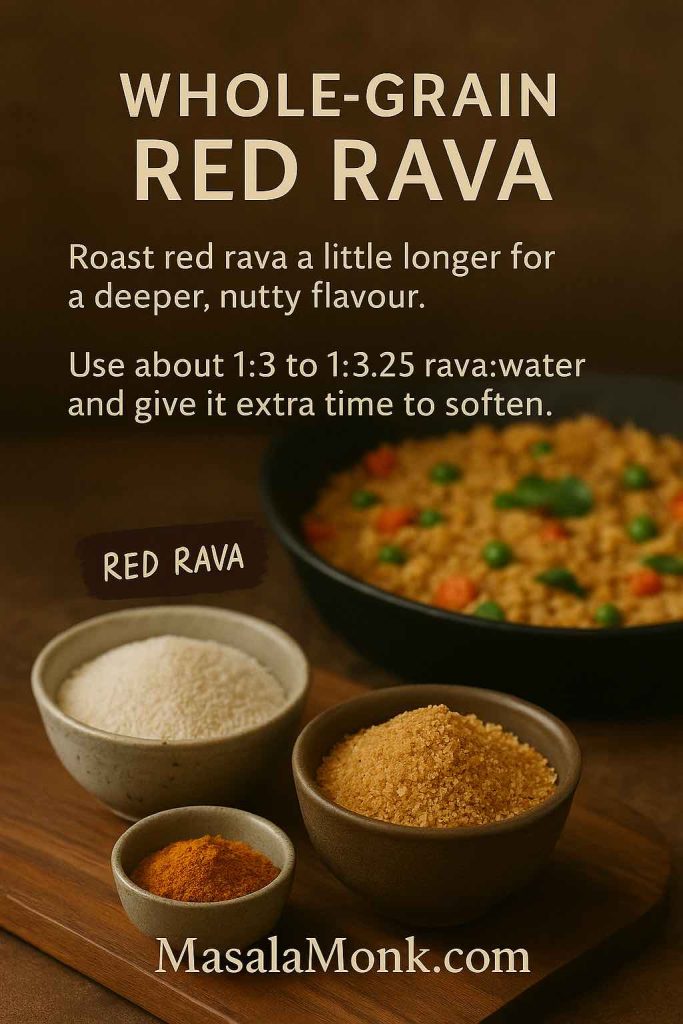
- Roast it a little longer; whole-grain rava benefits from deeper roasting.
- Increase the water slightly to around 1:3 or even 1:3.25 if it’s very coarse.
- Be patient with cooking time; whole grains take longer to soften.
The result is a nuttier, more rustic upma that fits nicely on days when you want something closer to a whole grain breakfast.
Recipe of “Mom-Style” Ghee Rava Upma
If you grew up on upma made by a mother or grandmother who didn’t shy away from ghee, you might crave that taste from time to time.
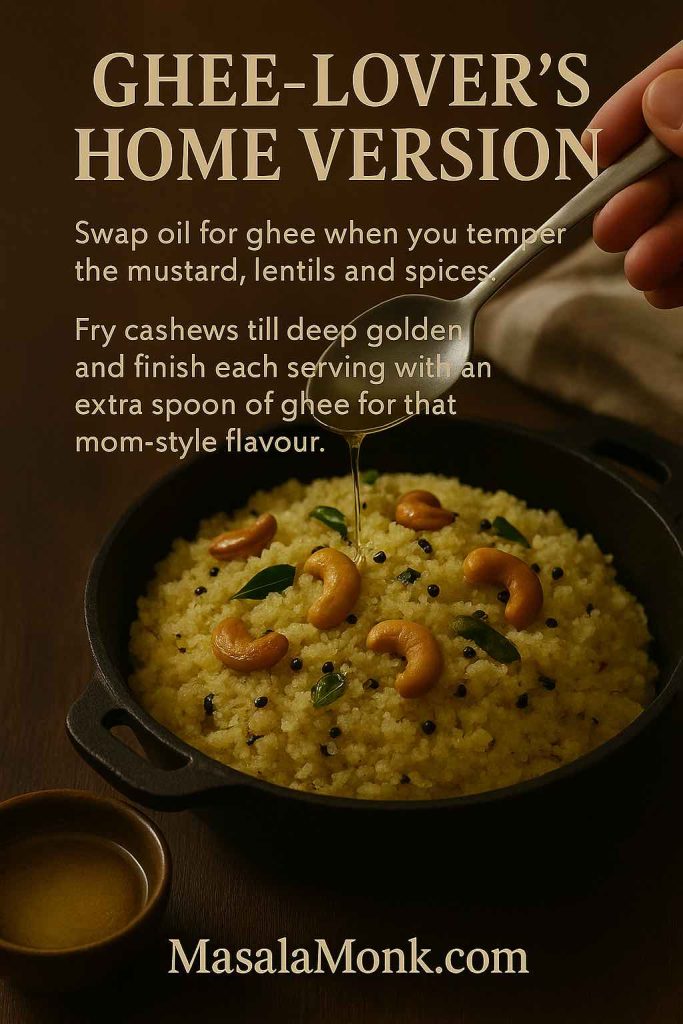
To get that flavour:
- Use ghee instead of oil for the tempering.
- Fry the cashews till deep golden.
- Finish with a small spoonful of ghee drizzled over each serving.
The extra richness hides in the background, but it makes every spoonful taste like a hug.
Also Read: One-Pot Chicken Bacon Ranch Pasta (Easy & Creamy Recipe)
Millet Upma: Jowar, Foxtail, Ragi and Multi-Millet Rava Recipe
Over the last few years, millet upma has become a favourite for people who want a more nutrient-dense breakfast without sacrificing Indian flavours. Millets are naturally rich in fibre, minerals like iron, calcium and zinc, and often have a gentler effect on blood sugar compared to refined grains.
If you’d like to see the bigger picture before you start cooking, two good reads are MasalaMonk’s own overview Millets: The Gluten-Free Superfood and their guide exploring the various types of millets in India. For a more formal look, you can also glance at the ICMR–NIN document on nutritional and health benefits of millets, or FSSAI’s classification of millets as “nutri-cereals” in their millets guidance notes.
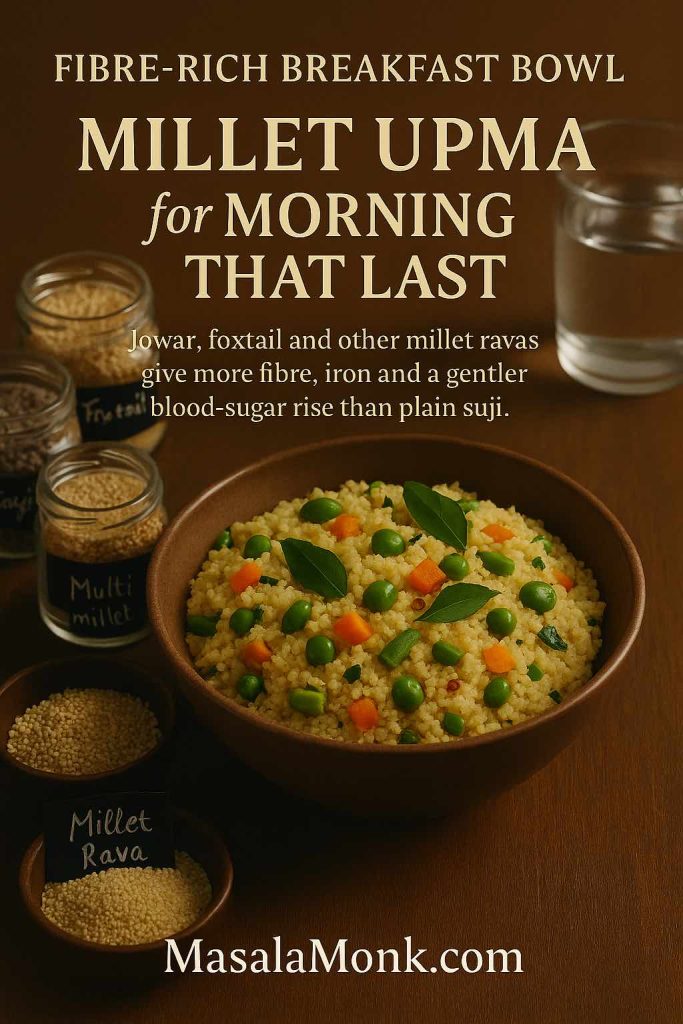
Which Millet Rava Works Well for Upma?
You can make a millet upma recipe using:
- Multi-millet rava blends
- Jowar rava, often called jonna rava in some regions
- Foxtail millet rava
- Ragi-based mixed millet rava (often combined with other millets for better texture)
For a clearer sense of what’s available in Indian markets, this breakdown of common types of millet available in India is handy.
Basic Millet Upma Recipe
For 2 servings:
- Millet rava – ½ cup
- Water – 1¾ to 2 cups (millets generally need more water than suji)
- Oil – 2 tablespoons
- Mustard seeds – ½ teaspoon
- Urad dal – 1 teaspoon
- Chana dal – 1 teaspoon
- Cashews – a small handful (optional)
- Onion – 1 small, chopped
- Ginger – ½ inch, chopped
- Green chillies – 1–2
- Curry leaves – a few sprigs
- Mixed vegetables – ½ to 1 cup
- Salt, lemon juice, coriander – to taste
The method mirrors rava upma, with a few tweaks:
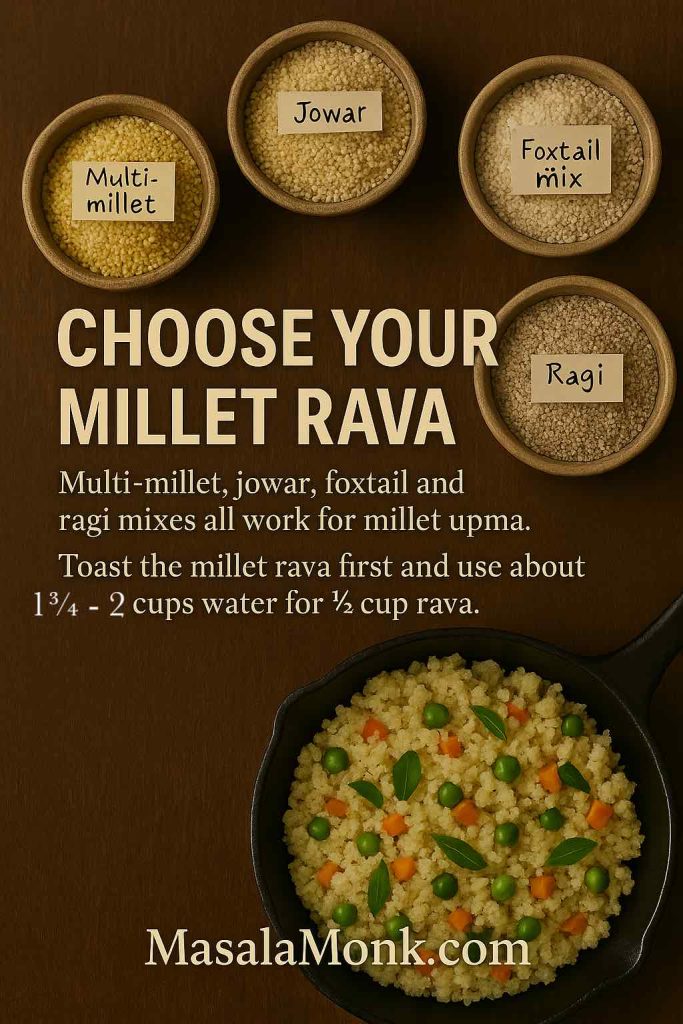
- Dry roast the millet rava in a pan till it smells toasty and feels lighter.
- In another pan (or the same pan after transferring the roasted millet), make the tempering: oil, mustard, dals, cashews, curry leaves, ginger, chillies, onion.
- Add vegetables and sauté till they brighten.
- Pour in water and salt; bring to a good boil.
- Lower the flame and slowly stir in the roasted millet rava, stirring as you go.
- Cover and cook on a low flame till the grains soften. Rest for a few minutes and fluff.
Because millets can feel new if you haven’t cooked them much before, you might also enjoy trying other breakfast-style millet recipes, such as fermented ragi (finger millet) idlis or barnyard millet and foxnuts savoury pancakes, which give you more ideas on how to rotate millets through your mornings.
Also Read: Katsu Curry Rice (Japanese Recipe, with Chicken Cutlet)
Wheat and Rice Rava Upma Recipe (Godhuma, Bansi, Samba, Arisi Upma)
Beyond millets, many households regularly switch between suji, wheat rava and rice rava. People looking for “wheat rava upma”, “samba rava upma”, “bansi rava upma”, “rice rava upma” and “arisi upma mix” are all essentially trying to do this rotation with confidence.

Wheat Rava Upma Recipe
Wheat rava goes by many names: godhuma rava, bansi rava, samba rava, broken wheat and so on. This base yields a slightly chewier, almost pilaf-like upma.
To prepare it:
- Replace suji with the same quantity of wheat rava.
- Roast it gently before use.
- Use around 1½ to 2 cups of water for ½ cup wheat rava, depending on how coarse it is.
The tempering and vegetable combination can be identical to rava upma. The only real difference is the cooking time, which tends to be a touch longer.
If someone at home has to avoid wheat because of an allergy or suspected intolerance, it’s worth reading a focused guide such as wheat allergy: symptoms, causes, and treatment and then leaning on rice or millet-based upma instead of wheat rava versions.

Recipe for Rice Rava Upma / Arisi Upma
Rice rava (or arisi rava) is simply broken rice. It tends to taste closer to soft rice cooked in a tempering, but still follows the “roast, simmer, steam” logic.
You can:
- Use ½ cup rice rava to start with.
- Roast it lightly, just until it loses any raw aroma.
- Temper oil with mustard seeds, dals, curry leaves, ginger, chillies and onions.
- Add water and salt (start with about 1½ to 1¾ cups, adjusting as needed).
- Stir in rice rava, then simmer covered till the grains are soft but not mushy.
If you’re already cooking plain rice alongside, you might find MasalaMonk’s guide on how to cook perfect rice every time helpful; it walks through stovetop, cooker and Instant Pot methods and helps time everything together in a busy kitchen.
Also Read: 10 Best Espresso Martini Recipe Variations (Bar-Tested)
Semiya Upma Recipe (Vermicelli / Seviyan Upma)
Switching gears a little, semiya upma is what many people reach for when they’re dealing with fussy children, tiffin boxes or days when they’re simply bored of rava. Vermicelli upma feels lighter, looks fun on the plate, and still uses the same basic building blocks.
Ingredients for 2 Servings
- Roasted vermicelli (semiya) – 1 cup
- Water – 2 to 2¼ cups
- Oil – 1½ to 2 tablespoons
- Mustard seeds – ½ teaspoon
- Urad dal – 1 teaspoon
- Chana dal – 1 teaspoon
- Cashew nuts – a small handful (optional)
- Onion – 1 small, chopped
- Ginger – ½ inch, minced
- Green chillies – 1–2, chopped
- Curry leaves – a sprig or two
- Mixed vegetables – ½ to 1 cup (peas, carrots, beans, corn)
- Salt, lemon juice, coriander – to taste
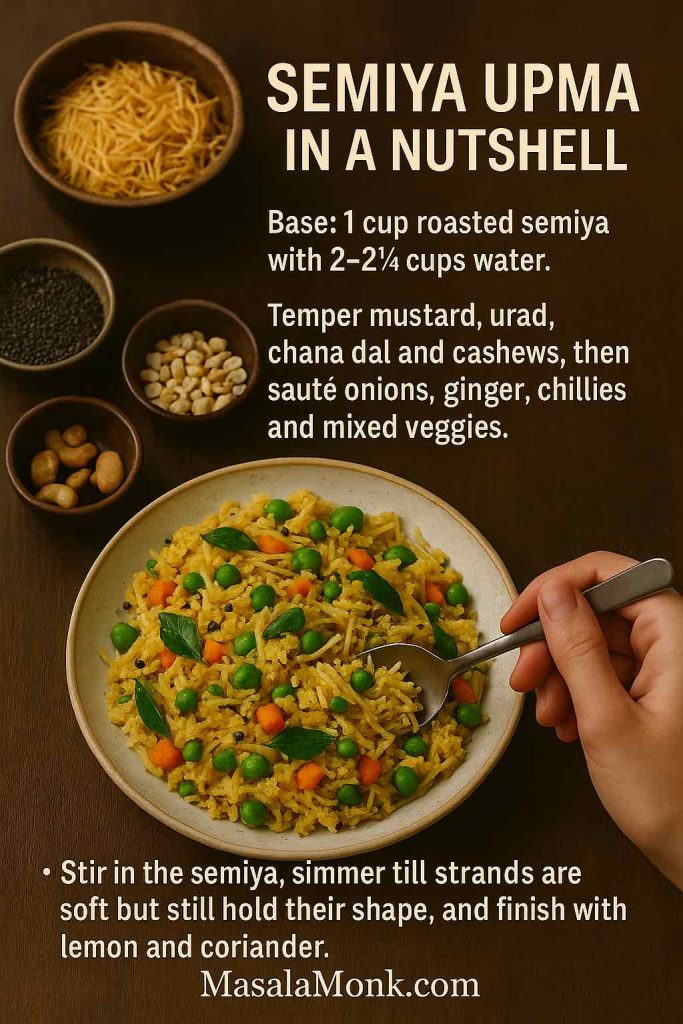
Method
- If the vermicelli isn’t pre-roasted, dry roast it till it turns a light golden-brown and gives off a nutty aroma.
- In a separate pan, prepare the tempering exactly as you would for rava upma: oil, mustard, dals, cashews, curry leaves, ginger, chillies, onion.
- Add vegetables and sauté briefly until they brighten in colour.
- Pour in water and salt, bring to a boil.
- Add the roasted vermicelli gradually while stirring so it doesn’t clump.
- Lower the heat and cook uncovered or partially covered until the water is absorbed and the semiya is soft but still holds its shape.
- Finish with lemon and coriander.
Unlike some other variations, semiya upma doesn’t always need chutney; it tastes quite complete on its own, especially if you’re generous with the vegetables and cashews.
Also Read: Greek Tzatziki Sauce Recipe (1 Master Sauce + 10 Easy Variations)
Oats Upma Recipe: A Savoury, High-Fibre Bowl
Once you’re comfortable with the idea that almost any grain can become an upma, oats are a natural next step. Many readers searching for “oats upma” are looking for a way to eat oats that doesn’t feel like a bowl of sweet porridge.
From a nutrition point of view, oats are rich in beta-glucan, a soluble fibre that helps with satiety and cholesterol regulation. Harvard’s Nutrition Source has a concise explainer under their overview of oats and beta-glucan benefits, and Mayo Clinic offers a practical perspective in their guide to starting your day with healthy oatmeal.
Ingredients for 2 Servings
- Rolled oats – 1 cup
- Water – about 1¾ cups (adjust if you like it looser or firmer)
- Oil – 1½ tablespoons
- Mustard seeds – ½ teaspoon
- Urad dal – 1 teaspoon
- Chana dal – 1 teaspoon
- Cashew nuts – a few (optional)
- Onion – 1 small
- Ginger – ½ inch
- Green chillies – 1–2
- Curry leaves
- Mixed vegetables – ½ cup or more
- Salt, lemon juice, coriander – as usual
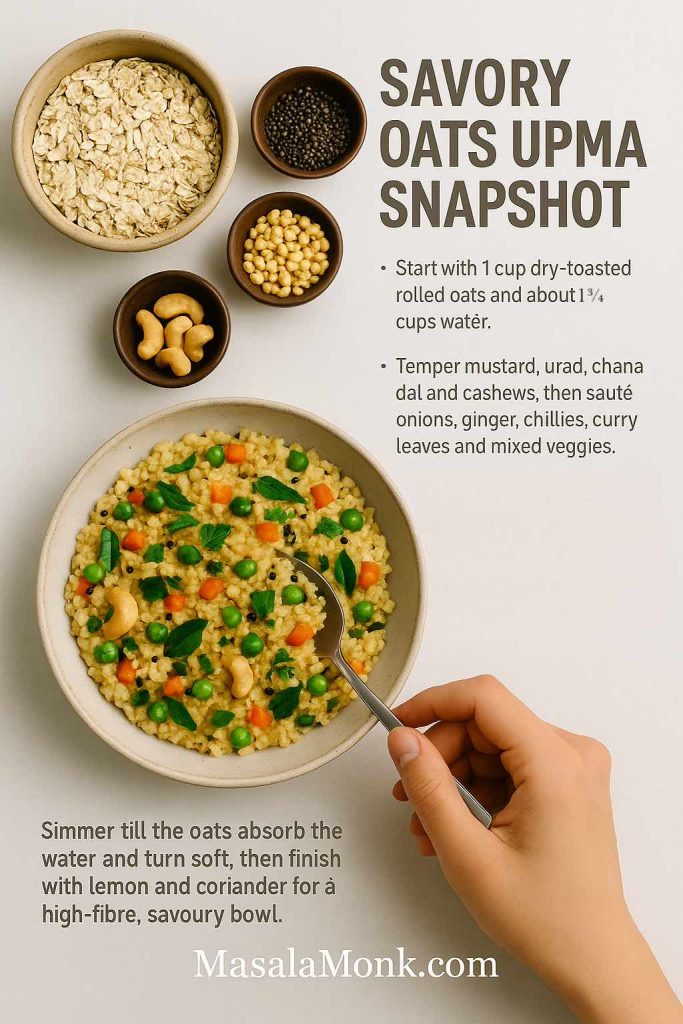
Method
- Dry toast the oats in a pan for 2–3 minutes until they smell toasty and slightly nutty. This step keeps the final texture pleasant and prevents mushiness.
- In another pan, temper oil with mustard, dals and cashews.
- Add curry leaves, ginger, chillies and onion, sauté till the onion softens.
- Stir in vegetables and fry briefly.
- Add water and salt; bring to a boil.
- Tip in the toasted oats, lower the flame and cook, stirring occasionally, until they absorb the water and turn soft.
- Rest for a couple of minutes, then fluff and garnish with lemon and coriander.
If you enjoy oats in both sweet and savoury forms, you might want to keep a few ideas bookmarked. MasalaMonk’s high protein overnight oats and their guide on turning plain oats into a high-protein meal are both excellent for days when you want more variety and protein without abandoning oats as a base.
Meanwhile, if you’re curious about the “hard” science on oats and cholesterol, you’ll find clinical-trial style evidence in publications that examine oat beta-glucan and LDL reduction in detail; those are reassuring when you commit to eating oats upma regularly.
Also Read: Simple Bloody Mary Recipe – Classic, Bloody Maria, Virgin & More
Quinoa Upma: Low-GI, High-Protein Comfort Recipe
Quinoa might not be native to Indian kitchens, but it slips into Indian flavours surprisingly well. When you treat it like rava and build an upma recipe around it, you get a bowl that tastes familiar but behaves a little differently in your body.
As a grain, quinoa tends to have a lower glycaemic index than both white and brown rice and also brings more protein and minerals per cup. A recent comparison on quinoa vs rice for blood sugar and weight management lays this out in an accessible way, and if you enjoy science-y talks, you might appreciate this Royal Society of Chemistry event that explored whether quinoa can be a healthier alternative to rice.
Ingredients for 2 Servings
- Quinoa – ½ cup, rinsed thoroughly
- Water – 1½ cups
- Oil – 1½ to 2 tablespoons
- Mustard seeds – ½ teaspoon
- Urad dal – 1 teaspoon
- Chana dal – 1 teaspoon
- Cashews – a handful (optional)
- Onion – 1 small, chopped
- Ginger – ½ inch
- Green chillies – 1–2
- Curry leaves
- Mixed vegetables – ½ to 1 cup
- Salt, lemon juice, coriander

Method
- Place the quinoa in a fine-mesh sieve and rinse thoroughly under running water. This helps wash away saponins, which can taste bitter.
- In a pan, prepare the tempering with oil, mustard seeds, dals and cashews, followed by ginger, chillies, curry leaves and onion.
- Add chopped vegetables and sauté briefly.
- Stir in the drained quinoa and sauté for a minute or two; this step gives the grains a lightly toasted flavour.
- Pour in the water, add salt, and bring to a boil.
- Reduce to a simmer, cover and cook until the water is absorbed and the quinoa grains show little “tails”.
- Rest off the heat for a few minutes, then fluff and finish with lemon and coriander.
To see how quinoa compares directly to rice in everyday meals, including dishes like pulao and bowls similar to upma, you might enjoy MasalaMonk’s own quinoa vs rice overview, which brings the conversation back into a very Indian kitchen.
Homemade Instant Upma Mix: Just Add Hot Water
There are days when you have no time to chop onions, wash curry leaves or even stand at the stove for long. That’s when searches like “instant upma mix for travel”, “instant rava upma mix”, “readymade upma packet” and “upma premix” start appearing.
Instead of only relying on store-bought packets, you can make your own instant upma mix in a small weekend batch and use it through the week, or carry it in a jar or pouches when you travel.
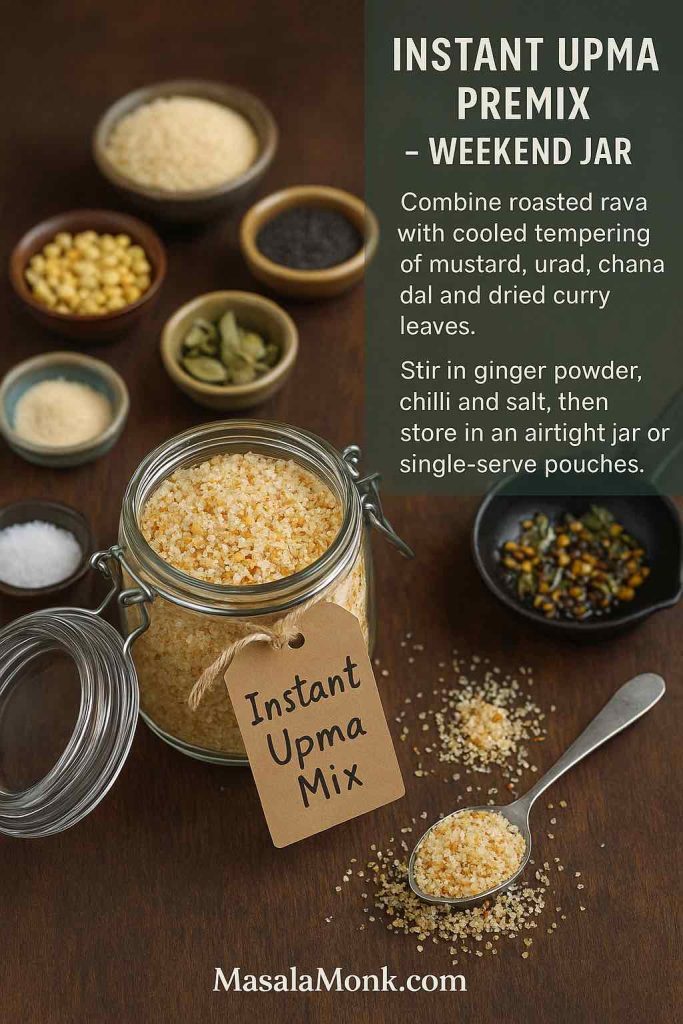
What You Need for a Small Batch
- Roasted rava – 1 cup
- Oil – 1 tablespoon (you can leave this out and keep the mix completely dry if you prefer)
- Mustard seeds – ½ teaspoon
- Urad dal – 1 teaspoon
- Chana dal – 1 teaspoon
- Dried curry leaves – a tablespoon or so
- Ginger powder – a pinch or two
- Green chilli powder or red chilli flakes – to taste
- Salt – ¾ to 1 teaspoon (or pack separately)
Making the Instant Upma Premix at Home
- Dry roast the rava if it isn’t already roasted; let it cool completely.
- In a small pan, heat the oil and fry mustard seeds, urad dal, chana dal and dried curry leaves until crisp and fragrant. Allow this tempering to cool fully.
- Mix the roasted rava with the cooled tempering, ginger powder, chilli powder and salt.
- Store the mix in a clean, dry, airtight jar. For travel, portion it into small zip pouches or tiny containers so you can make one serving at a time.
Because the mix already contains salt and spices, all you need at the destination is boiling water and a bowl.
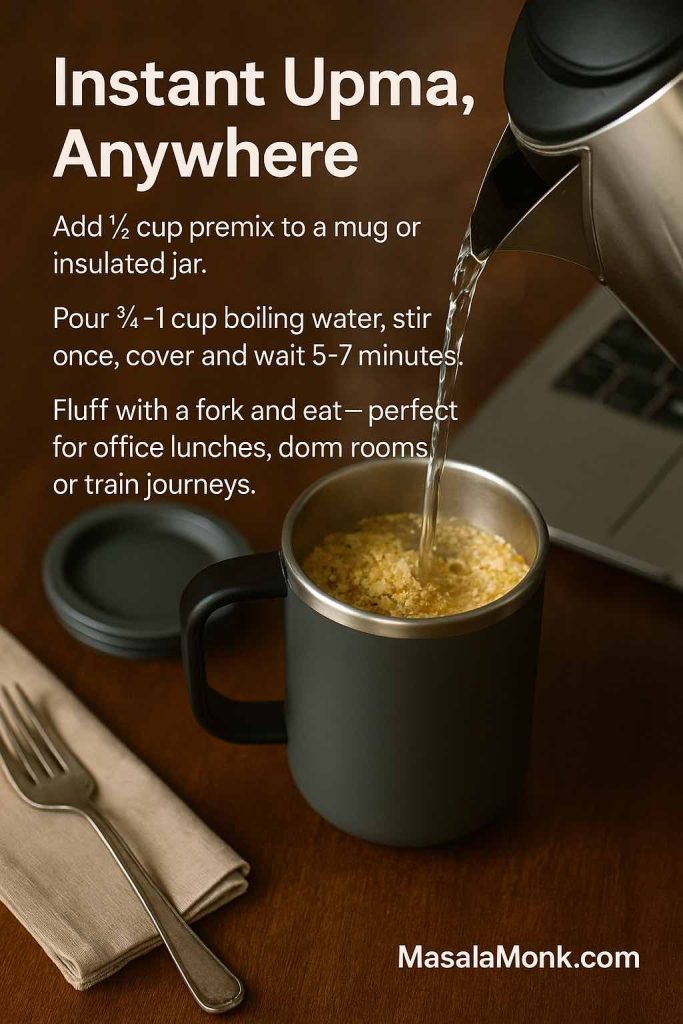
How to Cook Instant Rava Upma from the Mix
For one serving:
- Instant upma premix – ½ cup
- Boiling water – ¾ to 1 cup
You simply:
- Add the premix to a bowl or small insulated container.
- Pour boiling water over it, stir well and cover.
- Let it stand for 5–7 minutes.
- Fluff with a fork and eat.
This approach is especially useful for office lunches, dorm rooms and overnight train journeys. If you’re into meal prepping more broadly, you can pair a home-made upma premix with larger batch cooks using guides like MasalaMonk’s vegetarian and high protein meal prep ideas from Indian cuisine, which help you think in terms of components instead of one-off meals.
What to Serve With Upma (and How to Build a Breakfast Around It)
While upma can absolutely be the only thing on your plate, it often plays very well with other small dishes. On some mornings you might want something cooling and tangy alongside; on others, you might want a hot drink or even a sweet treat to nibble with the last few bites.

Here are a few ways to round out the experience:
- Coconut chutney, tomato chutney, gunpowder (podi) with ghee, lemon pickle or even a simple bowl of curd all sit naturally next to a bowl of suji upma, semiya upma or millet upma.
- A warm drink balances the savoury comfort of upma nicely. In winter, for instance, you could make a mug of homemade hot chocolate with cocoa powder on the side and turn breakfast into a cosy ritual.
- On days when you’re fasting for part of the day, sipping on homemade electrolytes for fasting before or after your eating window—within which you eat a lighter millet upma—can help you feel more balanced.
Boosting the Nutrition
If you’re trying to boost the overall nutrition of the plate, there are a few simple tweaks that add up over time:
- Sprinkle roasted seeds, such as pumpkin or sunflower, on your upma for a bit of crunch and good fats.
- Stir soaked chia seeds into yoghurt or chutney; for ideas on how to use chia in Indian-style meals, MasalaMonk’s guide on benefits of chia seeds & how to use them in Indian diet offers plenty of inspiration.
- Add a small fruit component—slices of papaya, orange segments, a banana—to bring in vitamins and sweetness naturally.
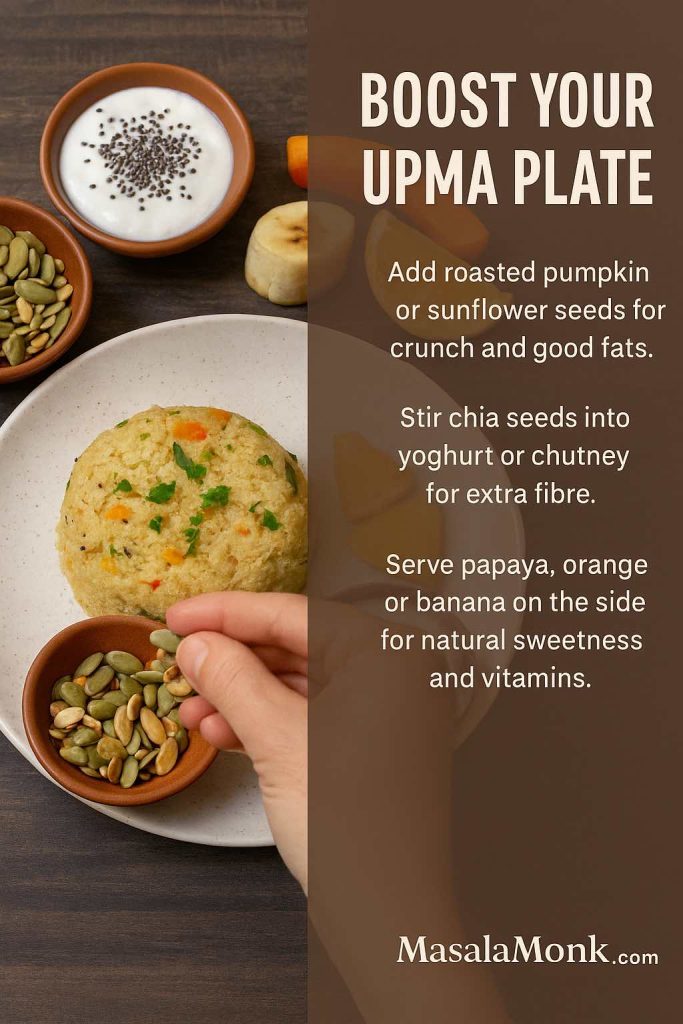
And if you like mixing Indian and Western breakfast styles on weekends, nothing stops you from serving a simple vegetable upma alongside a couple of slices of vegan French toast or baked toast sticks. MasalaMonk’s collection of vegan French toast recipes and their crispy French toast sticks can give you a head start there.
Rotating Grains Through the Week
One quiet advantage of mastering a few upma recipes is that you can then build a weekly rhythm around rotating grains. Instead of eating only suji or only oats, you can switch between several bases while keeping flavours familiar.
For example:
- Monday – Classic rava upma with onions and chillies
- Tuesday – Vegetable upma using wheat rava
- Wednesday – Millet upma with jowar or foxtail millet rava
- Thursday – Oats upma with lots of vegetables
- Friday – Semiya upma for a lighter, comforting bowl
- Saturday – Quinoa upma when you want something special
- Sunday – A more indulgent ghee rava upma with cashews
The idea of variety is not just about boredom; it’s also about nutrition. The updated Indian dietary guidelines from ICMR emphasise including a range of cereals and millets over the week rather than relying only on refined grains. You can read more about that in the ICMR document on cereals and millets in the diet, which explains why shifting between rice, wheat, millets and other grains matters for long-term health.

On top of that, broader resources that list foods rich in soluble fibre—such as this round-up of soluble-fibre-rich foods on Health.com—help you see where oats, barley, pulses and fruits fit into the larger picture of heart and gut health. As you get comfortable with those patterns, you’ll see that a thoughtfully made upma can anchor a very respectable breakfast, especially when it’s paired with pulses, vegetables and a side of fruit or nuts.
Also Read: Air Fryer Hard-Boiled Eggs (No Water, Easy Peel Recipe)
Bringing It All Together
When you step back and look at everything you can do with one simple technique, the humble upma starts to look less like a single dish and more like a framework. With one basic method—roast the grain, build a tempering, simmer, steam and fluff—you can create:
- A straightforward suji upma for days when you want something quick and familiar
- A vegetable or masala upma that almost counts as a complete meal
- A millet upma that uses jowar, foxtail or ragi rava for extra minerals and fibre
- A wheat or rice rava upma that tweaks the texture just enough to keep things interesting
- A semiya upma that feels tiffin-friendly and child-approved
- An oats upma that quietly supports your cholesterol and blood sugar goals
- A quinoa upma that borrows global ingredients but stays rooted in Indian seasoning
- A home-made instant upma mix that travels with you wherever you go

You don’t have to memorise separate instructions for each of these. Instead, you only need to internalise the proportions, roasting times and cooking times for each grain. Once you’ve done that, everything else is just small variations: more vegetables one day, more spices another, extra ghee on a Sunday, milder seasoning when someone’s unwell.
Somewhere between “how to make upma” and “which upma recipe should I choose today?”, you’ll probably find your own favourite combination of grain, vegetables, fat and accompaniments. And when that happens, upma stops being just a default breakfast and becomes one of those dishes you can cook almost on autopilot—leaving you free to enjoy the aroma of curry leaves in hot oil, the steam rising from the pan, and the simple pleasure of a warm, comforting bowl at the start of the day.
Also Read: Tres Leches – Mexican 3 Milk Cake Recipe
FAQs
1. What is upma, and how is it different from other Indian breakfasts?
Upma is a savoury, spoonable dish usually made by roasting a grain like rava (semolina, also called suji or upma rava) and then simmering it in a spiced liquid with a tempering of mustard seeds, lentils, curry leaves, chillies and onions. Unlike poha, which uses flattened rice, or idli, which relies on fermented batter, an upma recipe is quick, does not need soaking or grinding, and can be easily adapted to use different grains such as wheat rava, rice rava, millets, oats or quinoa.
2. What is the best rava for a classic rava upma recipe?
For a traditional rava upma or suji upma, medium or slightly coarse upma rava works best. Very fine suji can turn pasty, while extremely coarse rava may feel too chewy. Typically, packets labelled “upma rava” or “bombay rava” are ideal. Wheat rava (bansi or samba) and rice rava also make good upma, but they give a slightly different texture and flavour compared to the classic semolina-based upma recipe.
3. What is the ideal water ratio for soft, fluffy upma?
For most rava upma recipes, a ratio of 1:2½ to 1:3 (rava:water) works well. If you love very soft, hotel-style upma, you can lean closer to 1:3. On the other hand, if you prefer a firmer, grainier texture, you might enjoy 1:2½ more. Millet upma, wheat rava upma and rice rava upma usually need a little extra water; oats upma and quinoa upma also behave differently and often fall somewhere between 1:2 and 1:3 depending on the exact grain and cut.
4. How can I prevent lumps in my rava upma?
To keep your upma smooth and lump-free, the grain needs two things: roasting and careful mixing. First, dry roast the upma rava on a low to medium flame until it smells nutty and feels lighter. Next, bring the water and tempering to a full boil, then lower the heat. Gradually sprinkle the roasted rava into the boiling water with one hand, while you stir constantly with the other. This way, each little bit of rava meets the hot water separately and swells on its own, instead of clumping into balls.
5. Why does my upma turn sticky or mushy?
Upma often becomes sticky if the rava is not roasted enough, if the water ratio is too high for the grain, or if it is stirred aggressively after cooking. For a classic rava upma recipe, roast the semolina until it is aromatic, measure the water accurately, and once it has steamed, fluff gently rather than vigorously mixing it. For semiya upma (vermicelli upma) and oats upma, overcooking or adding too much water can also create a gluey texture, so it helps to keep the flame low and stop cooking as soon as the grain is just tender.
6. How do I make a simple upma recipe without vegetables?
A basic suji upma without vegetables is straightforward. Dry roast the rava, prepare a tempering with oil or ghee, mustard seeds, urad dal, chana dal, curry leaves, ginger, green chillies and onions, then add water and salt and bring it to a boil. Slowly stir in the roasted rava, cook covered for a few minutes, and finally finish with lemon juice and coriander. Even though there are no vegetables, this minimal upma recipe still tastes satisfying because of the fragrant tempering and the roasted flavour of the rava.
7. Can I make upma without onion or garlic?
Many people prefer a satvik upma recipe without onion or garlic, and that version is absolutely possible. In that case, rely more on curry leaves, ginger, green chillies, mustard seeds and lentils in the tempering. You can also add grated coconut or chopped coriander at the end for extra freshness. This style of upma is common on fasting days or festival mornings, and it works equally well with rava upma, millet upma and even oats upma.
8. Is upma healthy, or is it just a heavy breakfast?
Upma can be as light or as indulgent as you choose to make it. A plain rava upma recipe made with a moderate amount of oil or ghee, plenty of vegetables and served with yoghurt or chutney can fit into a balanced diet. Nevertheless, rava is a refined grain, so if you want a more nutrient-dense bowl, it helps to rotate with millet upma, wheat rava upma, oats upma or quinoa upma. By changing the base grain, increasing the amount of vegetables and moderating the fat, you can turn a simple upma recipe into a wholesome, everyday breakfast.
9. Which type of upma is better for weight management or diabetes?
Although individual needs differ, many people looking for a “healthy upma recipe” gravitate towards millet upma, oats upma or quinoa upma. These versions often have more fibre and a gentler impact on blood sugar compared to an upma recipe made only with refined semolina. In addition, adding vegetables, a small portion of nuts or seeds and pairing the bowl with yoghurt or a protein-rich side makes the meal more filling and may reduce the urge to snack soon after. Even so, portion size still matters, so lighter, moderate servings usually work best.
10. What are some easy variations beyond rava upma?
Beyond the classic rava upma, it is quite simple to explore other versions using the same basic method. For instance, semiya upma (vermicelli upma) swaps rava for roasted vermicelli threads; millet upma uses millet rava such as jowar, foxtail or multi-millet blends; oats upma relies on rolled oats; quinoa upma uses rinsed quinoa simmered with the tempering; and rice rava or arisi upma uses broken rice. The seasoning and vegetables can remain almost identical, so once you grasp one upma recipe, the others become natural extensions.
11. How do I prepare an instant upma mix for travel or busy mornings?
An instant upma mix starts with roasted rava and a very dry tempering. To assemble it, first roast the semolina thoroughly and cool it, then fry mustard seeds, urad dal, chana dal and dried curry leaves in a little oil until crisp. Once everything is completely cool, mix the rava, the tempering, dry spices such as ginger powder and chilli powder, and salt. Store the mixture in an airtight jar or in single-serving pouches. Later on, you only need to combine a portion of this instant upma mix with boiling water, allow it to stand covered for a few minutes, and fluff it before eating.
12. How long can roasted rava or instant upma premix be stored?
Roasted rava alone, if cooled thoroughly and kept in an airtight container away from moisture and insects, keeps well for several weeks and often even a couple of months. Instant upma premix that contains oil and spices generally has a shorter shelf life, though it still lasts a few weeks at room temperature in a cool, dry cupboard. If your climate is very humid, keeping smaller quantities of the premix in the fridge can be a safer choice. In any case, it is wise to check aroma and appearance before use; if the mix smells stale or looks clumpy, it is better not to use it.
13. Can I make upma in a pressure cooker or microwave?
Upma is traditionally cooked in an open pan, but it can also be adapted to a pressure cooker or microwave when needed. In a cooker, you can prepare the tempering, add rava and water, then cook on low heat without placing the whistle, treating the cooker like a heavy pan. In a microwave, you may roast rava and prepare the tempering separately, then combine everything with hot water in a microwave-safe bowl and cook in short bursts, stirring in between. Both methods work, although controlling texture and avoiding overcooking is usually easiest on the stovetop.
14. Is upma suitable for toddlers and children?
Upma can be very child-friendly, especially when you keep the spices gentle and cut the vegetables finely. For toddlers, it helps to make the rava upma slightly softer, use only a mild amount of chilli (or skip it altogether), and mash or blend the bowl lightly if needed. As children grow older, you can gradually introduce vegetable upma, semiya upma, millet upma and even a lightly spiced masala upma. Because the basic upma recipe is soft and easy to chew, it often works well as one of the early family foods that kids can share with adults.


